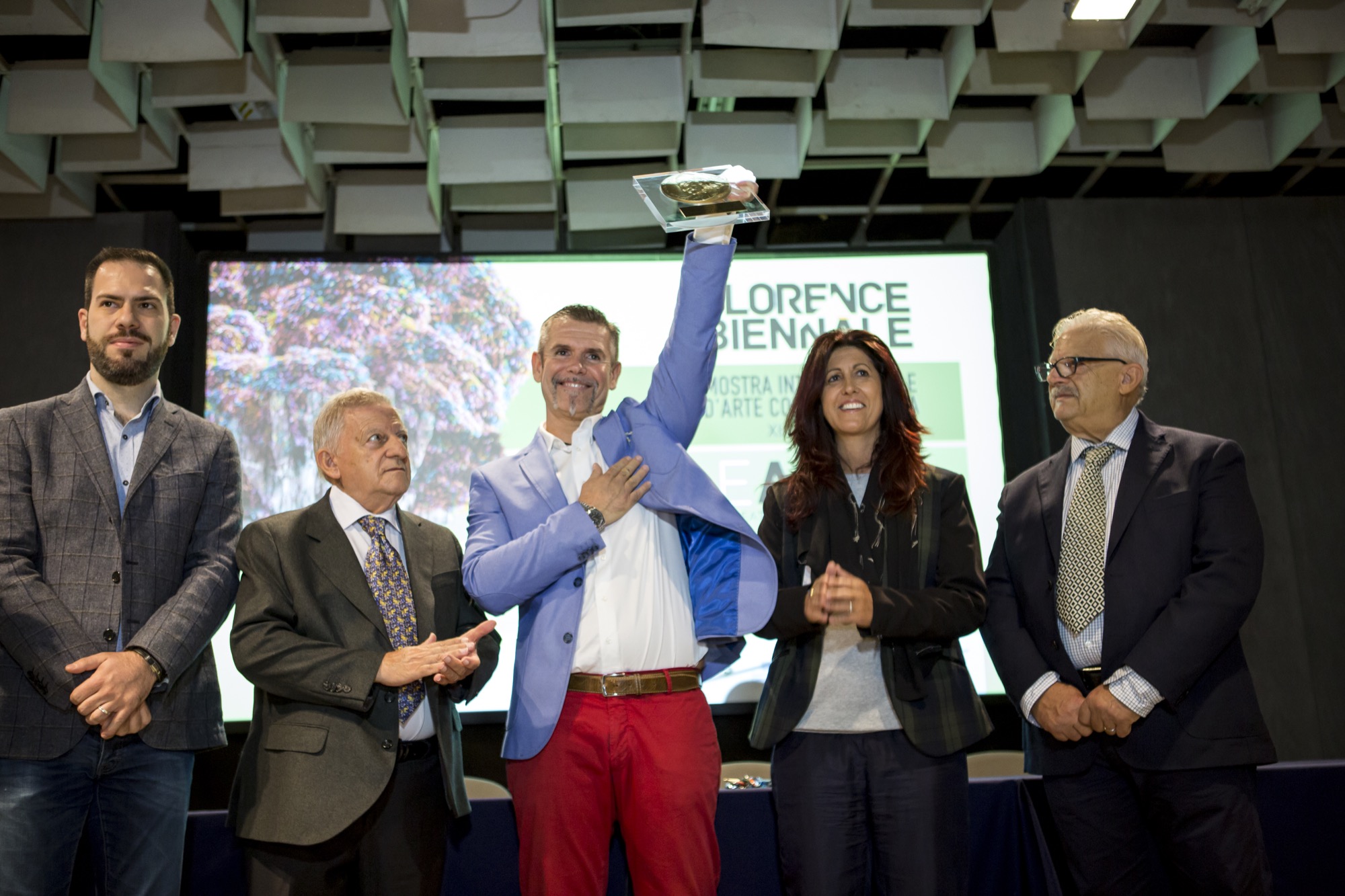Sauro Cavallini - FB
The Florence Biennale bestowed the “Lorenzo il Magnifico” Lifetime Achievement Award to Sauro Cavallini, in memoriam, “for having masterly given breath so of life to bronze through sculpture by conferring lightness and rhythm to original and harmonious figures with extremely natural, yet stylised anatomies. Indeed, his sculptures are the outcomes of an extraordinary creative talent”. The award was received by Aine and Teo Cavallini.
The works of Sauro Cavallini at the Florence Biennale 2017
With a view to celebrate such a great sculptor, who recently passed away, an exhibition has been set up in a dedicated space at the Fortezza da Basso, from 6 to 15 October 2017. On display there together for the first time was Cavallini’s drawing of the Last Supper (1979) along with three studies cast in bronze as models (c. 1982-1987), and one bust from the monumental plaster sculpture representing the same subject (1988), the bronze casting of which was never made. Through this display it was possible to reconstruct Cavallini’s creative process – from the two-dimensional representation of the idea for an artwork in progress to its three-dimensional realisation throughout at least three variants cast before making the monumental plaster-and-iron sculpture from which the mould for the bronze casting could be obtained.
Plastic and changing sculptures
The artistic career of Sauro Cavallini (La Spezia, 4 March 1927 – Fiesole, 27 July 2016) started in the early 1950s in Florence. At that time he was experimenting different materials, and in 1957 he opened his studio in Via Orsammichele. In 1960 he moved to Fiesole, where his villa now houses the study centre dedicated to him, which is managed by his son Teo, and daughter Aine. In 1964 he developed his lifelong passion for bronze sculpture and made his famous Cat, with which he would win the Italian national Prize “Il Fiorino” at Palazzo Strozzi the following year. In 1966 he completed his first public work, the Seagull’s Flight, destined to the new premises of the Italian broadcasting television in Florence. That same year the flood of the Arno in Florence left an indelible mark on him as artist (more than his sojourns in Zurich, Paris, London, and Detroit would do) in that he restored some historic marble sculptures that had been damaged in the Santa Croce Basilica and Bargello Museum. As a self-taught artists working ‘hands on’ at artworks from antiquity, to which he was immensely sensitive, he perfected his technique and sublimed his aesthetic sense. From self-taught he perfected the technique and sublimated his aesthetic sense, which is expressed in sculptures with plastic anatomies of extreme naturalness, even in their stylization. Sculptures seemingly changeable and never static, if not for the time of a breath.
https://saurocavallini.com/
https://saurocavallini.com/

